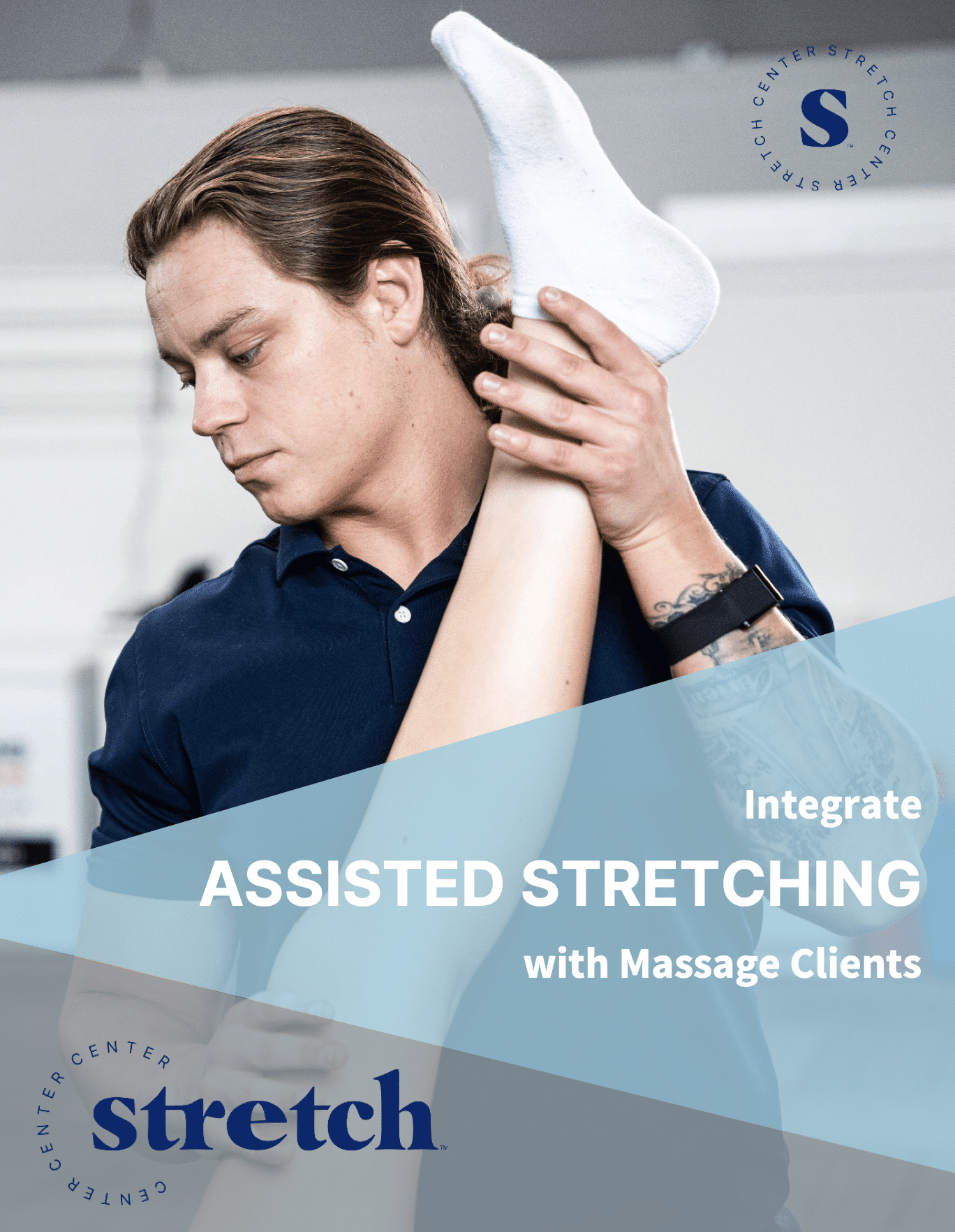Restore Your Body, Recharge Your Energy
Early mornings. Long days. Sitting, standing, sitting, standing… hauling books around, hunching over papers or a laptop, writing on the whiteboard… Teaching is far more physically demanding than most people realize—but you know it all too well, don’t you? Stretch Center is here to help.
Many teachers sacrifice their time, bodies, and minds for their students day in and day out—but it’s also important to take care of yourself before you hit that inevitable breaking point. The physical demands and mental stress of teaching build up in your muscles and fascia as tension, and while that tightness might fade on its own eventually, wouldn’t it be better to handle it… permanently?
Chronic neck pain, tight hips, achy feet—these are just a few of the symptoms you’ve likely endured from dedicating yourself to educating future generations. So, put down the pen and give an assisted stretching session a try. Let’s see if we can take a little of that load off your shoulders.
Where Do Teachers Feel It Most?
When working with teachers, honestly, there isn’t a muscle in the body that couldn’t use a little extra help. But here are some of the most common patterns we see:
| Common Movements/Postures | Likely Tight/Painful Areas |
| Standing for long periods | Calves, lower back, hip flexors |
| Leaning over desks | Mid/upper back, hamstrings, neck |
| Writing on whiteboards | Shoulders, deltoids, forearms, wrist extensors |
| Carrying books/laptops | Traps, biceps, wrist flexors |
| Sitting during planning/grading | Hip flexors, hamstrings, thoracic spine |
| Stress and long workdays | Jaw, neck, upper back, even breathing patterns |
What Can Stretching Do for You?
- Reduce neck and shoulder tension from grading and writing,
- Boost energy through circulation and postural resets,
- Open up tight hips so you don’t grunt and groan every time you stand in front of your class,
- Loosen tight forearms and wrists from gripping pens, markers, and laptops,
- Calm your nervous system after a chaotic day of managing the classroom.
Quick Stretch Routines You Can Do at School or Home
Here’s a simple guide to stretches you can try before first period, during lunch, or before bed. No equipment needed—just you and a few minutes of your time.
1. Doorway Chest Opener
What it helps: Chest, shoulders, upper back.
- Stand inside the doorframe.
- Place your forearm along the edge of the doorframe, shoulder at ~90 degrees.
- Step forward slightly and gently open your chest away from the anchored side, squeezing your shoulder blades together.
- Hold for 20–30 seconds. Switch sides.
2. Standing Forward Fold
What it helps: Hamstrings, lower back.
- Stand tall, feet hip-width apart.
- Slowly bend at the hips, letting your arms hang toward the floor.
- Keep a slight bend in your knees if needed.
- Hold for 30 seconds, breathing deeply.
3. Seated Spinal Twist
What it helps: Mid/upper back, spine mobility.
- Sit upright in your chair.
- Cross your right leg over your left if comfortable.
- Twist your torso to the right, holding the chair’s arm or back for support.
- Hold for 20–30 seconds, then switch sides.
4. Wrist Flexor/Extensor Stretch
What it helps: Forearms, wrists.
- Extend one arm straight out, palm facing up.
- Use your other hand to gently pull your fingers downward to stretch the forearm.
- Hold for 20 seconds, then switch sides.
- Repeat with palm facing down to target the wrist extensors.
5. Standing Calf Stretch (Wall or Desk-Assisted)
What it helps: Calves, ankles.
- Place your hands on a wall or desk.
- Step one foot back, keeping it flat on the floor, and bend your front knee.
- Feel the stretch in your back calf.
- Hold for 30 seconds each side.
Assisted Stretching: The Ultimate Reset
If adding stretching to your routine feels impossible some days (we get it), consider scheduling time for yourself after school with a Stretch Center Practitioner. They’ll do the work for you—reducing stress, promoting deeper sleep, and helping you feel refreshed for your next day in the classroom.
Practitioners can safely guide you through deeper stretches in areas like the hips, shoulders, and upper back—places that are hard to fully stretch on your own. Every teacher has different needs, and a Stretch Center Practitioner will 100% customize your session to your body.
Make Stretching Part of Your Routine
Try this mini routine a few times a week, and you’ll notice a difference over time. If assisted stretching sounds like a good fit, book a session once or twice a week to help relieve your chronic stress patterns.
You show up every day for your students—now it’s time to show up for yourself.
Better posture, better energy, less tension, sharper focus, improved mobility, less pain, and a deeply relaxing 25–55 minutes… sound like it would improve your quality of life? Then give Stretch Center a shot. You deserve it.
Conclusion
Teachers, book a session with a certified Stretch Center Practitioner today.
Massage therapists, trainers, and wellness pros—ready to help your local teachers? Learn to stretch them professionally at stretchcenter.com/certification.
Want CEU credits with NASM, AFAA, NCBTMB, NPCP, ISSA, and/or ACE? We’ve got those too!





